TechRadar Verdict
The Blackview BV9900 Pro is so close and yet so far, it is not as groundbreaking as the BV9800 Pro but delivers a fantastic set of upgrades to warrant a very solid rating. Definitely one to buy if you want the best FLIR smartphone out there.
Pros
- +
Fantastic price
- +
FLIR
- +
Good performance
- +
Great camera sensor
Cons
- -
Still no 5G
- -
Still on Android 9
- -
128GB feels inadequate
- -
Smaller battery capacity
Why you can trust TechRadar
Blackview is one of the more consistent rugged smartphone vendors on the market and has delivered some of the best mobiles in a vertical that has become more and more crowded over the years. Even Samsung with its Xcover range, has tested the waters.
The manufacturer usually brings two flagship devices to the market every year and now is the time to test the first one of 2020, the BV9900 Pro; its main selling point is the FLIR infrared camera sensor which was introduced in the BV9800 Pro at a surprising low price tag at just under $500.
The BV9900 Pro keeps the price tag but significantly changes what’s inside. Read on to find out what else changed.
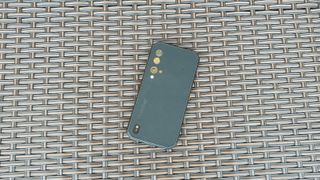
Design
The BV9900 Pro goes back to a simpler design, still influenced by what we called the 4 + 4 model (four short corners and four long edges), and losing the roundedness of the BV9800 Pro. It feels more compact, more solid and more utilitarian than its predecessor; as with the previous iteration, it adheres to IP68/IP69K and MIL-STD-810G certifications; Blackview hasn’t confirmed whether they’ve been actually tested to these ratings or if they carry the relevant specifications.

It has a smaller volume (78.3 x 156.5 x 14.2mm) and weighs less than the former Blackview flagship (264g vs 322g) while using the same material; metal frame for sturdiness, polycarbonate and TPU for improved grip as well as giving it a tidier, more professional finish.
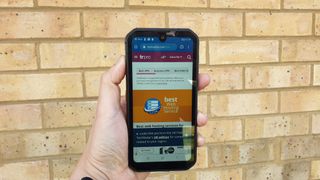
Looking at the front of the device, we can see the teardrop 16-megapixel front facing Samsung selfie camera positioned centrally on a 5.84-inch display with a 1080 x 2080 pixel resolution, covered with a Corning Gorilla 5 layer.
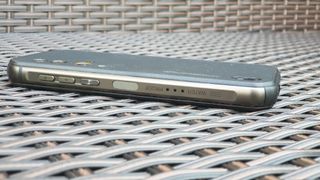
On the right edge are the volume rocker, the power button and a separate fingerprint reader, the left edge contains the SIM tray and a customisable button. The bottom part houses the speaker grill and a covered Type-C USB port.

The back of the BV9900 Pro is where all the action takes place. The heart rate monitor is located near the lower left corner of the device while the FLIR sensor is one of four located at the back with a 5-megapixel depth camera and a fourth 2-megapixel one.
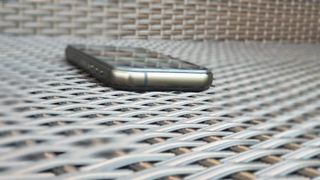
Hardware
The Blackview BV9900 Pro that was shipped to us came with the following hardware:
CPU: Helop P90
GPU: IMG PowerVR GM 9446
RAM: 8GB
Storage: 128GB
Screen size: 5.84-inch
Resolution: 2280 x 1080
Weight: 264g
Dimensions: 78.3mm x 156.5mm x 14.2mm
Rear camera: 48MP/5MP, 16MP + 2MP
Front camera: Samsung 16MP S5K3P9-SX
OS: Android 9
Battery: 4.38mAh
The BV9900 Pro swaps the P70 for a P90 processor from Mediatek. The system memory is raised by a third to 8GB and while the storage capacity remains the same at 128GB, it is swapped for one supporting UFS 2.1, which should translate into a much faster storage subsystem. Similarly Bluetooth 5.0 makes a debut in lieu of Bluetooth 4.1.
Elsewhere, the 48-megapixel Sony sensor stays in place as does the Type-C connector, 802.11ac Wi-Fi, the 10W wireless charging capability, the 16-megapixel selfie camera and the fact that it does run a stock version of Android 9.0. One big disappointment is the fact that the battery capacity has decreased by almost a third, from 6.58Ah to 4.38Ah.
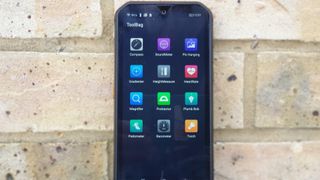
Performance and in use
There were no updates at the time of writing and the BV9900 Pro, as it is the case with all Mediatek devices comes with its own set of dedicated applications like Duraspeed (which limits the impact of apps running in the background), Smart Assist, a SIM Toolkit, a Child mode and a Game Mode.
This is how the Blackview BV9900 Pro performed in our suite of benchmark tests:
Geekbench: 398 (single core); 1434 (multi core)
PCMark (Work 2.0): 9476
Passmark: 5723
Passmark CPU: 15189
Androbench (sequential): 516 (sequential read); 196 (sequential write)
Androbench (random): 151 (random read); 31 (random write)
3DMark Slingshot: 2011
3DMark Slingshot Extreme: 1189 (OGL) 1489 (Vulkan)
HWBot Prime: 5406
The ubiquitous toolbox (that can be found on almost all rugged smartphones) does not include a night camera like on the BV9800 Pro despite the thermal sensing capabilities of the FLIR Lepton. Also worth mentioning is a nifty free translation app that offers a large array of languages and the ability to do real-time translation.
When it comes to sheer power, the device is up there with the fastest rugged smartphones we’ve tested to date, the Mediatek P90 lot (from Ulefone and Doogee) and the lone Qualcomm Snapdragon 845-powered AGM X3, its upgraded storage delivers almost SATA speeds (at least on read) and is one of the reasons why we encountered absolutely no lags or delays during our session with it.

The competition
There’s only three other widely available smartphones that come with embedded FLIR.
The BV9800 Pro is the previous flagship from Blackview and we reviewed it in December 2019. Unsurprisingly, we gave it an Editor’s choice award as it delivered exceptional value for money. You can get it for as low as $450 from Aliexpress and it is still a worthy device if you wanted the cheapest FLIR smartphone. We still think that forking extra for the BV9900 Pro is well worth it.
The Cat S61 retails for about $660 and was launched in 2018. It has an older but still capable Qualcomm Snapdragon 660 with half the storage. It does however have an indoor air quality monitor as well as a laser-assisted distance measuring tool. Oh and it was the first rugged smartphone we reviewed that earned a well-deserved 5/5 stars.
Even older is the S60, the original FLIR smartphone which costs just under $400. Just bear in mind that it was launched almost four years ago and will struggle to get any meaningful updates having been launched on Android 6.0. It does have 3GB of RAM and 32GB onboard storage which is what you’d get on an entry level Android smartphone and yes, you have that FLIR camera as well.
A FLIR-less version of the 9900 Pro, unsurprisingly exists called the BV9900. It comes with 8GB of RAM and 256GB onboard storage which makes it an attractive alternative to the likes of the Doogee S95 Pro or the Ulefone Armor 7.
Final verdict
As surprising as it is, we think that the BV9900 Pro is not perfect and will not therefore get a perfect 5 like its predecessor. A few reasons for that; firstly, it is not as groundbreaking as the BV9800 Pro as it only brings in some significant but ultimately marginal improvements. There’s still no Android 10 or 5G, despite the BV9900 Pro being a flagship model. Ditto for the lack of 256GB option and the smaller battery capacity.
That’s not to say that the BV9900 Pro is an average phone. The Mediatek P90, the extra 2GB of RAM, the 48-megapixel camera and the switch to UFS are real improvements but Blackview was THAT close to getting an extra half a point to reach quasi-perfection. Let’s hope that happens with the BV10000 Pro later this year, one which is likely to get Android 10 and 5G courtesy of the Mediatek Dimensity 820 series.
- We've also highlighted the best rugged smartphones

Désiré has been musing and writing about technology during a career spanning four decades. He dabbled in website builders and web hosting when DHTML and frames were in vogue and started narrating about the impact of technology on society just before the start of the Y2K hysteria at the turn of the last millennium.

